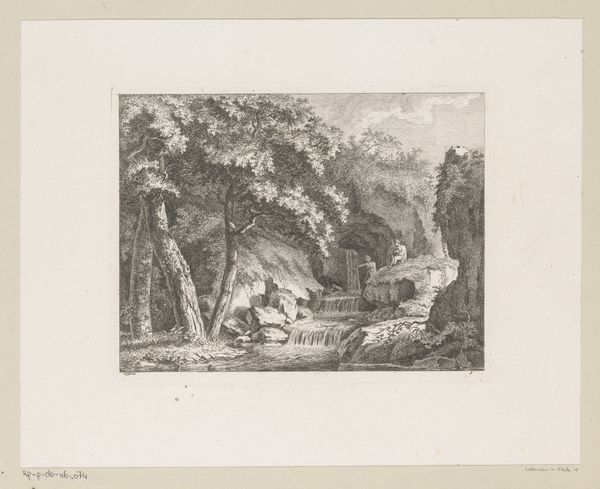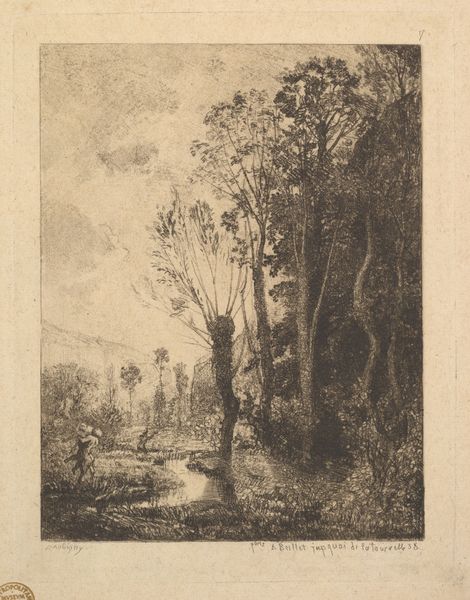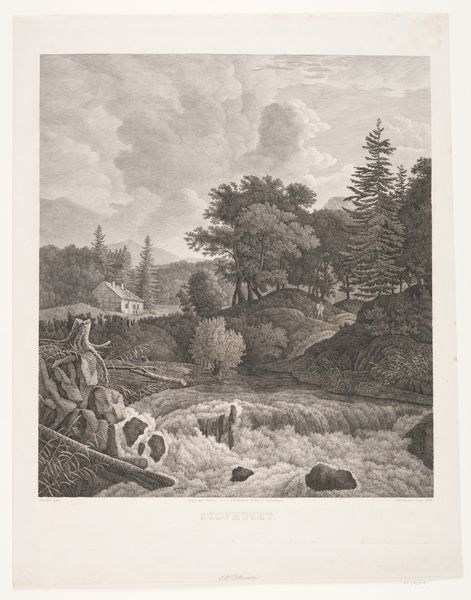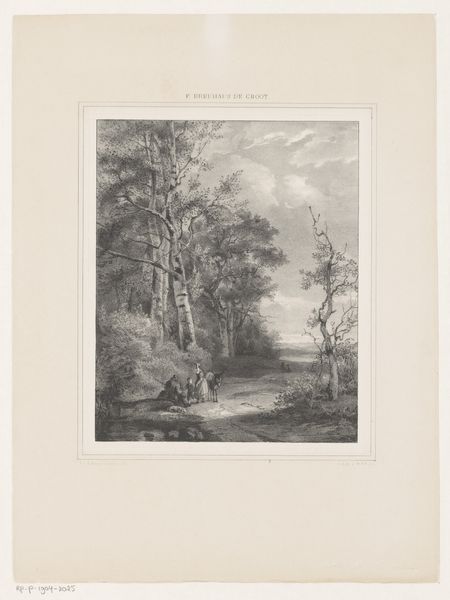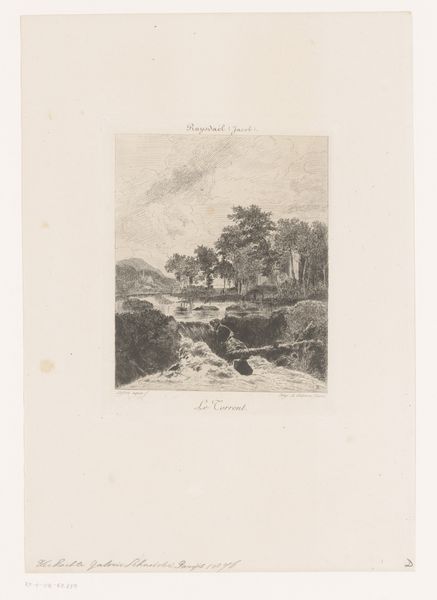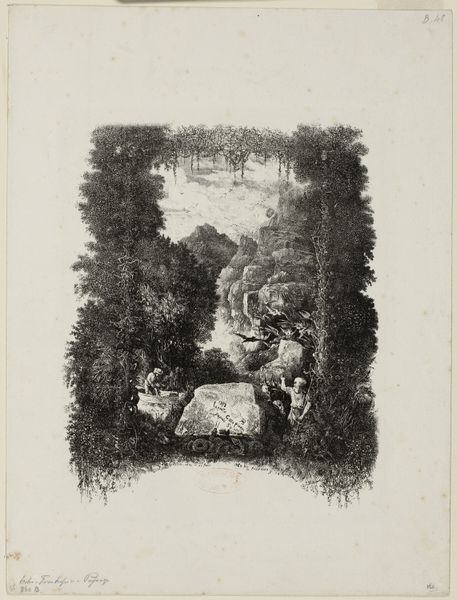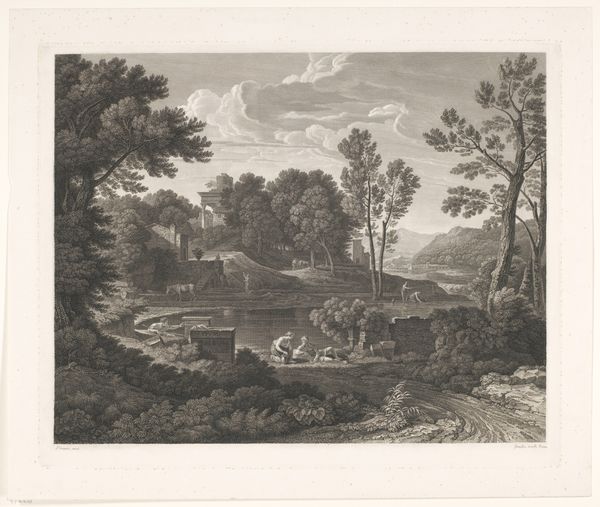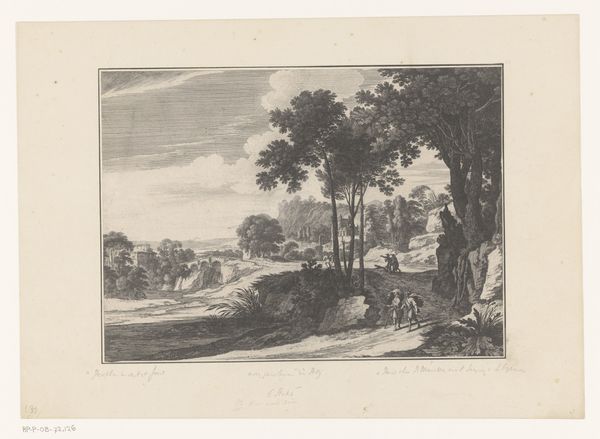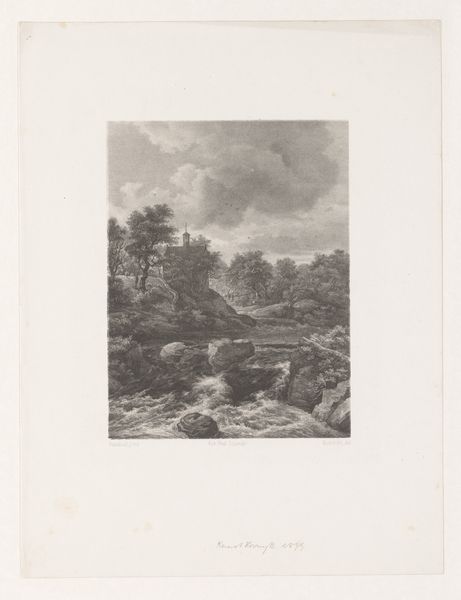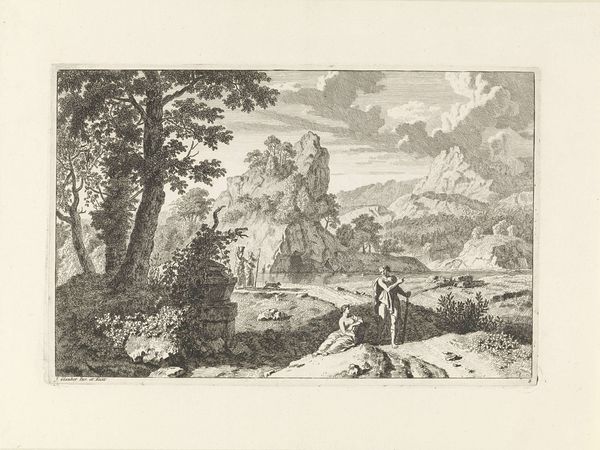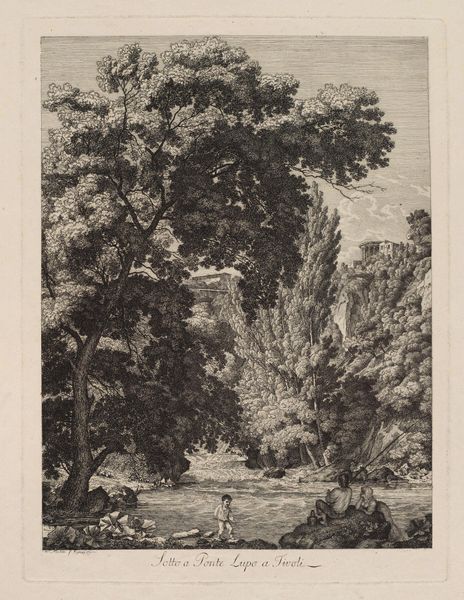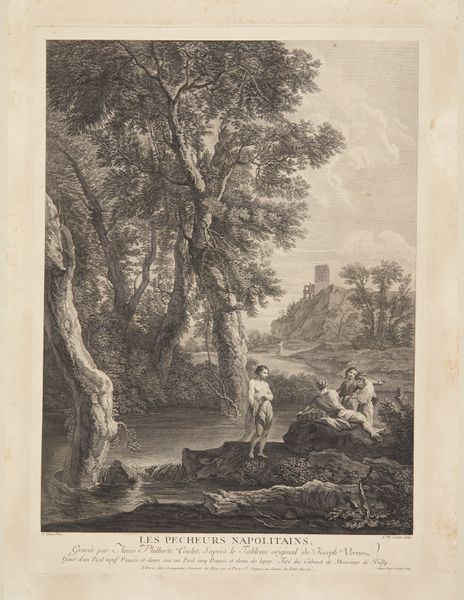
Dimensions: Sheet: 12 5/16 × 8 15/16 in. (31.3 × 22.7 cm) Plate: 9 5/8 × 7 1/4 in. (24.5 × 18.4 cm)
Copyright: Public Domain
Curator: This is Fèlix Bracquemond's "Le Bois de Boulogne, from "L'Artiste"", an intaglio print from 1857. Editor: It has this lovely melancholic feel. The etching, with its muted tones and delicate lines, gives the scene a dreamlike quality, doesn't it? Curator: It certainly evokes a particular sensibility. Boulogne was experiencing massive change under Napoleon III, with redesigned gardens and the burgeoning of leisure culture. Bracquemond situates this scene at the cusp of modernity. Editor: I am drawn to the swans—classic symbols of grace, love, and purity. Their presence in this, let's be honest, artificially designed "natural" space highlights the curated and controlled aspects of that era. Are they intended as a commentary on the artifice? Curator: Precisely! The Bois de Boulogne was consciously shaped to reflect evolving ideas about nature and public life. This print, published in "L'Artiste," circulated these ideals. Look at the contrast of the wilder trees with the couple enjoying a stroll: the imagery encapsulates shifting social roles as well. Editor: Notice, too, how Bracquemond places them at water's edge: water symbolizes the unconscious, so they're poised between the social world of the park and some deeper emotional resonance? Curator: That’s a fantastic point! We see reflected here the larger project of imagining Paris as a cultural capitol, one that both facilitates leisure and, equally, broadcasts the supposed values of the Second Empire. Bracquemond captures that carefully curated impression. Editor: I now understand how carefully chosen each of these natural forms, like the birds, actually are. Looking closer, it’s almost chilling to observe what first seems romantic. Curator: It underscores how images shape our perceptions of reality. The etching process allowed for distribution on a mass scale and cemented an idea. Editor: Yes, that makes it especially evocative. These quiet forms quietly speak to bigger historical shifts and lingering ambiguities about humankind’s impact on nature.
Comments
No comments
Be the first to comment and join the conversation on the ultimate creative platform.
